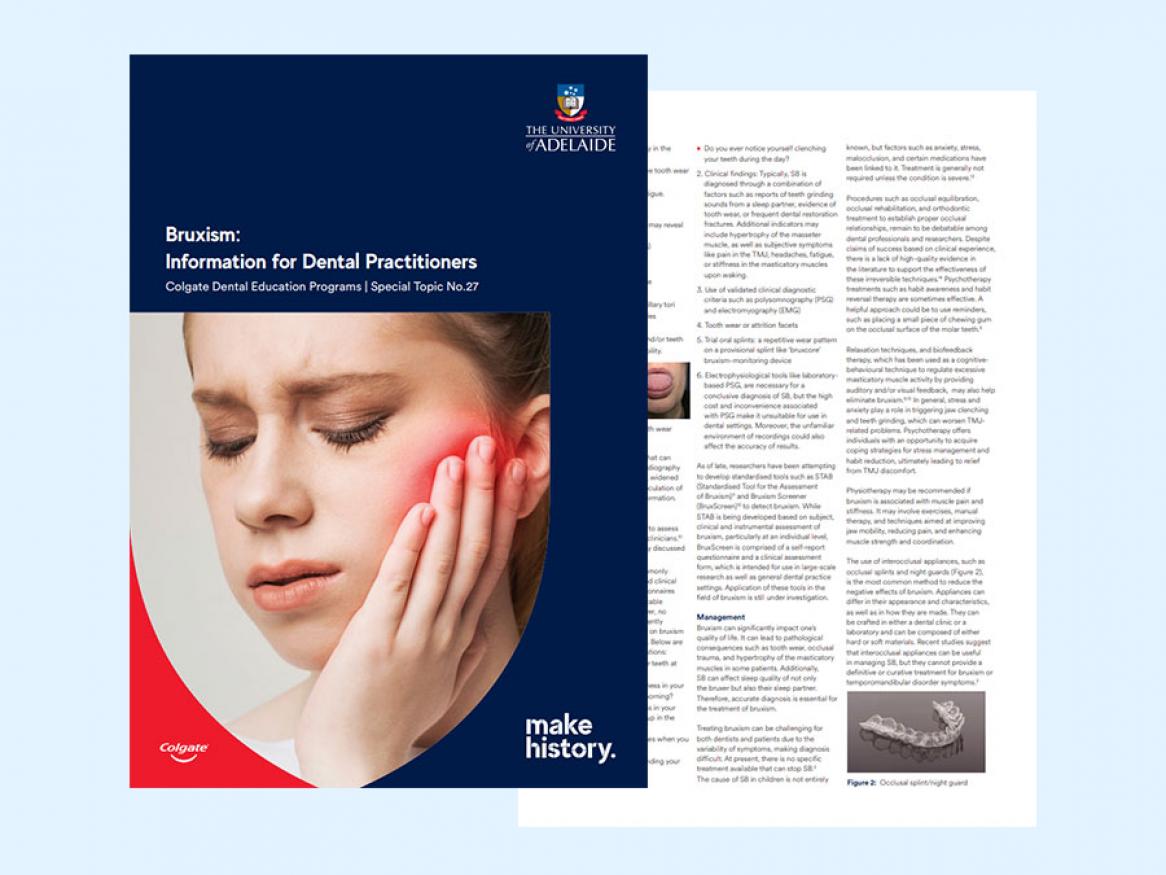Bruxism
Bruxism is defined as a repetitive jaw-muscle activity characterized by clenching or grinding of the teeth and/or by bracing or thrusting of the mandible.
Basically, there are two distinct types of bruxism - sleep bruxism (SB) and awake bruxism (AB). SB occurs during sleep and AB during wakefulness. Either SB or AB is no longer regarded as a sleep or movement disorder in otherwise healthy individuals. There are various underlying causes of bruxism including but not limited to emotional stress, medication use, genetics, neurological disorders, occlusal interferences and substance abuse. Therefore, treating bruxism early is crucial to prevent potential dental complications.
The professional pamphlet outlines the epidemiology, classification, clinical features, diagnosis, and management of bruxism with a specific reference to dentistry. While describing these aspects briefly the patient pamphlet highlights the importance of not only recognizing early signs and symptoms of bruxism but also consulting one's medical or dental professional before complications arise.
Pamphlet orders
Multiple copies of patient pamphlets are available for ordering via the University of Adelaide Online Shop.


